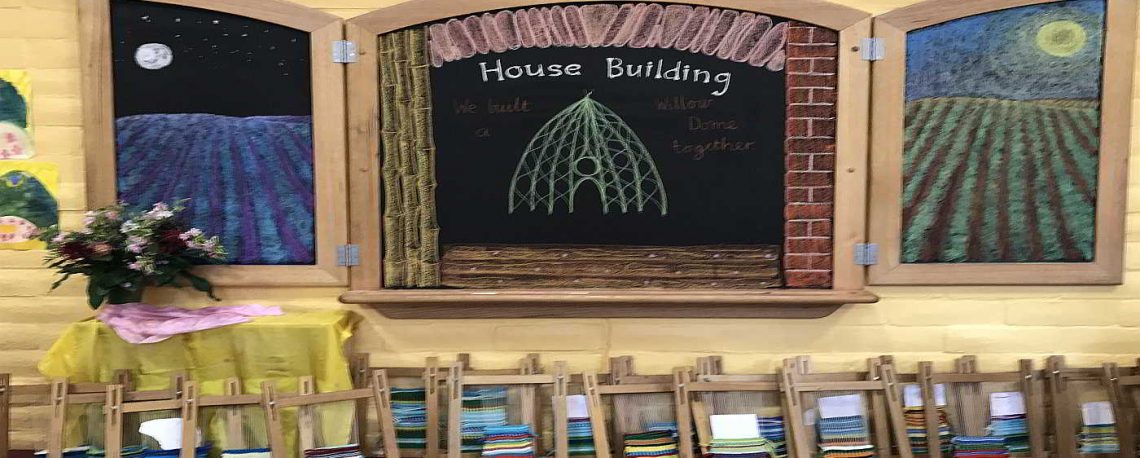Along with the cure curriculum areas of English, Maths, Science and History, the every day class room provides a rich array of supporting educational experiences. The class room teacher brings to the children regular opportunities for music, drama, physical education, painting, form drawing, sculpture, garden, woodwork and many other rich experiences.
Core curriculum subjects are taught by the class teacher in the main lesson and practice session times. Please click on the headings below to view the Steiner Education Australia core curriculum documents.
- English
- Maths
- Science
- History
- Physical Education
A healthy human being has a healthy body, strong self-esteem, positive relationships, the ability to make appropriate choices and a sense of connection to their world. The Physical Education curriculum plays a key role in developing all of these.
Please visit the Physical Education page for further information.
Steiner identified two distinct strands in the Arts curriculum:
- The Sculptural/Pictorial strand (commonly referred to as the Visual Arts). These are activities that express individuality of experience internally (painting, drawing, form drawing, modeling).
- The Poetic/Musical strand which is an expression of a more externalised, unifying, community experience.
Every child is an artist. Art awakens an inner creativity and appreciation of beauty and aesthetics. The educational and therapeutic effects of artistic activities in are far reaching and lasting, with the potential to grow and mature into life skills in adulthood. By creating and interpreting images and objects, children come to understand themselves and the world.
Art is never seen solely as a separate unrelated subject, but as an essential part of the whole of education. History, English, Maths and Science work are all presented in an artistic way, so that the intellect is always warmed by the feeling life of the child.
However, in order to do justice to this richly diverse area, distinct ‘Art’ lessons are timetabled throughout the week.
Painting and Drawing
Painting
Children need to experience the living world of colour. Painting inspires images as well as encouraging the child to become aware of the life and mood of colour, as each colour has its own personality. Children experience their own feeling life when painting, through the ‘language’ of colour.
Drawing
The focus on drawing reflects the importance of representational communication and encourages communication in ways other than the written or spoken word.
In order to access the capacity for such individual expression, Drawing needs to be incorporated as part of all Main Lesson’s (including literacy and numeracy) as well as separately timetabled skill development sessions.
Form Drawing
Form Drawing has a stimulating and strengthening effect upon our human life-forces and a harmonising, animating influence on the physical organism. It is a special therapeutic aid for counteracting the chaotic, prematurely hardening and deadening influences of our increasingly intellectualised culture and technology.
Form drawing benefits kindred subjects such as drawing and illustrating, geometry and craft designs. Artistic ability, some degree of technical skill, imagination and accurate observation are also building blocks for many school subjects. Other longer-term abilities and attitudes that form drawing encourages go well beyond this including:
- a sense of beauty, harmony and proportion
- an imagination lively enough to take practical limitation in its strid
- the will to size up problems and find appropriate solutions
- flexible thinking to adapt to changing situations
- the integrity that comes from being content only with your best work
- an appreciation of symbolic language
Wax and Clay Modeling
Children inwardly imitate movement, which flows as formative force into their hands. This power of observation and creation is not an intellectual one, but the result of an interaction of sense observation and will activity. There needs to be an awareness that the back is as important as the front and that any sculptural form expresses the whole. Three dimensional work holds the attention of even the most active child.
Classroom Music
Music and rhythm pervade every aspect of the life of children. Through rhythmical movement, singing and playing percussion instruments, the child can experience beautiful, live music that provides the foundation for more theoretical instruction (from class three upwards) and a deeper appreciation of music in later life.
From class one to six the class teacher delivers a musical program of song, percussion and recorder. From class three onwards, children participate in the specialist music program with individual lessons and orchestra sessions. Please see the Specialist Teacher Subjects for further information.
Music is incorporated throughout the curriculum because:
- Music deepens other work by supporting themes from main lessons
- Music increases the ability to be socially harmonious as children learn to work as a group
- Music helps promote a balance in perception of self worth and worth of others
- As a member of an orchestra/choir, we gain an understanding of the self being important to the whole and realise how all others are equally important.
Drama
Gardening
A deep connection with the earth is fostered throughout the Steiner Curriculum. Right from the beginning children are encouraged to engage with the natural world through planting, tending and harvesting their own food.
Community cooking begins in Playgroup and Kindergarten and the love of gardening grows and flourishes all the way through the Primary Years. Each class tends their own small garden and cooks freshly harvested food from school and home.
There is a particular focus on gardening during the class three main lesson on farming and the class five main lesson on the botany. Gardening is an area of the curriculum with much opportunity for parents to participate with class cooking, working bees, bio dynamic farming and the annual harvest table at the school Market Day and Fair.

